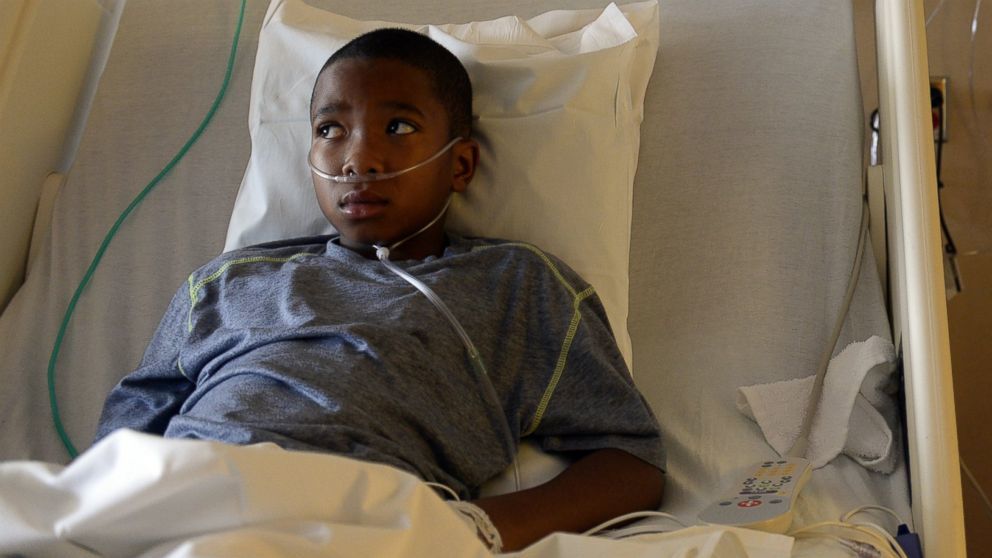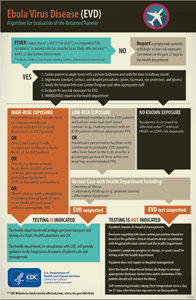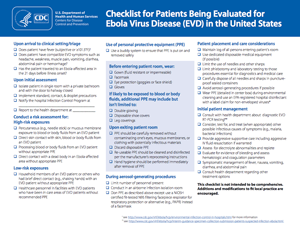
Source: ABC News
Occasionally, we will have special announcements of current health issues that we feel everyone should know about, and we do our best to deliver as much information we can about them. In this case, it is the alarming rise in cases of Enterovirus nation-wide, and concerns both health officials and the Centers for Disease Control (CDC) have about this mysterious illness. Over the next few weeks we will be following this developing story and provide links to as much information on its spread, known symptoms, and what health and CDC officials recommend the public can do to guard against it.
On September 26, 2014, the CDC issued an Official Health Alert Network (HAN) Advisory, Acute Neurologic Illness with Focal Limb Weakness of Unknown Etiology in Children. The HAN’s purpose is to spread awareness of the neurologic syndrome and to help determine its geographic spread.
Currently, the CDC is investigating nine cases of the acute neurologic illness among pediatric patients, among the ages of 1-18 years.
According to the report, “Common features included acute focal limb weakness and specific findings on magnetic resonance imaging (MRI) of the spinal cord consisting of non-enhancing lesions largely restricted to the gray matter. In most cases, these lesions spanned more than one level of the spinal cord. Some also had acute cranial nerve dysfunction with correlating non-enhancing brainstem lesions on MRI. None of the children experienced altered mental status or seizures. None had any cortical, subcortical, basal ganglia, or thalamic lesions on MRI. Most children reported a febrile respiratory illness in the two weeks preceding development of neurologic symptoms. In most cases, cerebrospinal fluid (CSF) analyses demonstrated mild-moderate pleocytosis (increased cell count in the CSF) consistent with an inflammatory or infectious process. CSF testing to date has been negative for West Nile virus and enteroviruses, including poliovirus.”
The United States is currently experiencing a nationwide outbreak of EV-D68 associated with severe respiratory disease.
The CDC lists a number of recommendations and provides contact information to report suspected cases:
“Recommendations
- Patients who meet the following case definition should be reported to state and local health departments:
Patients ≤21 years of age with
- Acute onset of focal limb weakness occurring on or after August 1, 2014;
AND
- An MRI showing a spinal cord lesion largely restricted to gray matter.
- State and local health departments should report patients meeting the case definition to CDC using a brief patient summary form (www.cdc.gov/non-polio-enterovirus/investigation/). State health departments should send completed summary forms to CDC by email at limbweakness@cdc.gov.
- Providers treating patients meeting the above case definition should consult with their local and state health department for laboratory testing of stool, respiratory, and cerebrospinal fluid specimens for enteroviruses, West Nile virus, and other known infectious etiologies.
- Health departments may contact CDC for further laboratory and epidemiologic support by phone through the CDC Emergency Operations Center (770-488-7100), or by email at limbweakness@cdc.gov. Confirmation of the presence of EV-D68 currently requires typing by molecular sequencing.”
 The converse side of saving money from the implementation of performance improvement, incident reporting systems, and a culture of quality, is losing a whole lot more due to bad outcomes, poor incident management and patient readmissions.
The converse side of saving money from the implementation of performance improvement, incident reporting systems, and a culture of quality, is losing a whole lot more due to bad outcomes, poor incident management and patient readmissions.
According to a report out by the Agency for Healthcare Research and Quality (AHRQ), between January and November 2011 hospitals spent $41.3 billion treating patients readmitted within 30 days of discharge. Of that number, nearly 1.8 million readmissions cost the Medicare program $24 billion, 600,000 privately insured patient readmissions totaled $8.1 billion, 700,000 Medicaid patient readmissions cost hospitals $7.6 billion and uninsured patients were readmitted at a cost of $1.5 billion.
Highlighting the need for the healthcare industry adopt new means of tracking adverse incidents, the AHRQ said in the study, “[I]dentifying conditions that contribute the most to the total number of readmissions and related costs for all payers may aid healthcare stakeholders in deciding which conditions to target to maximize quality improvement and cost-reduction efforts,”.
It is this simple task of tracking adverse events which most hospitals have no efficient means of recording and acting on. Recent statistics report that nearly 75% of all hospitals in the United States are utilizing antiquated systems, relying on paper or spreadsheets, for their Risk and Quality Management. However, healthcare is coming around to performance improvement technologies pioneered and perfected in other industries — such as manufacturing — which provide real-time, accurate insight into a hospital’s quality program.
At first it takes some time to understand why an IT approach, to what has traditionally just been a passive reporting method of quality improvement, is preferable. But, it is the real-time insight that a thoughtful algorithm, within an Incident Management Software like ActionCue Clinical Intelligence, can provide which is so invaluable.
In today’s day-and-age, it is no longer necessary for patient safety and hospital management data to be delayed by days, weeks or months. Inexpensive, web-based systems, like ActionCue, deliver immediate information to staff at all levels of a hospital’s organization, allowing for a prompt and precise response to patient safety and healthcare quality issues — improving patient care and reducing hospital costs.
 That’s right, Prista is attending another conference. We can’t seem to get enough of seeing our current subscribers and meeting new folks who care as much about Improving Quality in hospitals as we do. Speaking of Quality Improvement and Risk Management in hospitals, the 2014 TAHQ Conference & membership meeting’s theme is Quality & Risk Professionals: Navigating through the changing landscape of healthcare reform. In conversations with many of our subscribers this subject is a common complaint, the difficulties that Risk and Quality professionals face trying to do their jobs with the constant change.
That’s right, Prista is attending another conference. We can’t seem to get enough of seeing our current subscribers and meeting new folks who care as much about Improving Quality in hospitals as we do. Speaking of Quality Improvement and Risk Management in hospitals, the 2014 TAHQ Conference & membership meeting’s theme is Quality & Risk Professionals: Navigating through the changing landscape of healthcare reform. In conversations with many of our subscribers this subject is a common complaint, the difficulties that Risk and Quality professionals face trying to do their jobs with the constant change.



